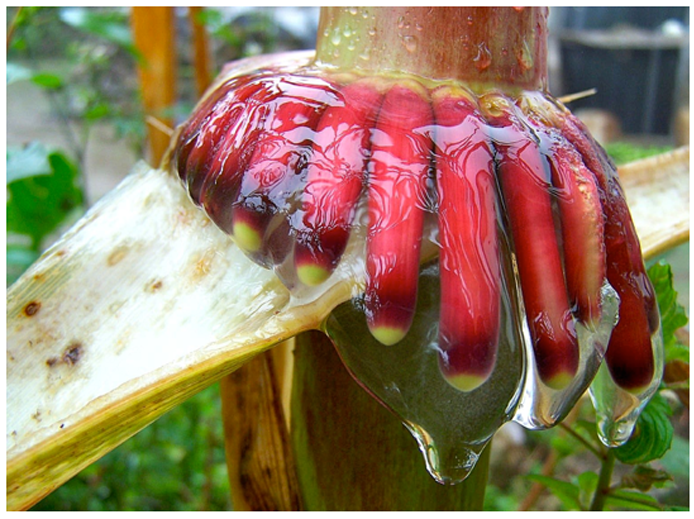The Corn of the Future Is Hundreds of Years Old and Makes Its Own Mucus (Smithsonian) [View all]
By Jason Daley
smithsonianmag.com
August 10, 2018

In the 1980s, Howard-Yana Shapiro, now chief agricultural officer at Mars, Incorporated, was looking for new kinds of corn. He was in the Mixes District of Oaxaca in southern Mexico, the area where the precursors to maize (aka corn) first evolved, when he located some of the strangest corn ever seen. Not only was it 16 to 20 feet tall, dwarfing the 12-foot stuff in American fields, it took six to eight months to mature, far longer than the 3 months needed for conventional corn. Yet it grew to those impressive heights in what can charitably be called poor soil, without the use of fertilizer.. But the strangest part of the corn was its aerial roots--green and rose-colored, finger-like protrusions sticking out of the corn’s stalk, dripping with a clear, syrupy gel.
Shapiro suspected that those mucousy fingers might be the Holy Grail of agriculture. He believed that the roots allowed this unique variety of corn, dubbed Sierra Mixe and locally bred over hundreds or even thousands of years, to produce its own nitrogen, an essential nutrient for crops that is usually applied as fertilizer in epic amounts.
The idea seemed promising, but without DNA tools to look into the specifics of how the corn was making nitrogen, the discovery was shelved. Nearly two decades later, in 2005, Alan B. Bennett of the University of California, Davis—along with Shapiro and other researchers—began using cutting-edge technology to look into the nitrogen-fixing properties of the phlegmy corn, finding that indeed, bacteria living in the mucus were pulling nitrogen from the air, transmuting it into a form the corn could absorb.
Now, after over a decade of field research and genetic analysis, the team has published their work in the journal PLOS Biology. If the nitrogen-fixing trait could be bred into conventional corn, allowing it to produce even a portion of its own nitrogen, it could reduce the cost of farming, reduce greenhouse gas emissions and halt one of the major pollutants in lakes, rivers and the ocean. In other words, it could lead to a second nitrogen revolution.
***
Co-author Jean Michel-Ane from the University of Wisconsin, Madison, agrees that this discovery opens up all types of new possibilities. “Engineering corn to fix nitrogen and form root nodules like legumes has been a dream and struggle of scientists for decades. It turns out that this corn developed a totally different way to solve this nitrogen fixation problem. The scientific community probably underestimated nitrogen fixation in other crops because of its obsession with root nodules,” he says in a statement. “This corn showed us that nature can find solutions to some problems far beyond what scientists could ever imagine.”
***
more: https://www.smithsonianmag.com/science-nature/corn-future-hundreds-years-old-and-makes-its-own-mucus-180969972/
Not exactly LBN, but I had never heard of this before. There's lots more in the article, and some of the developments should be in the field soon.
